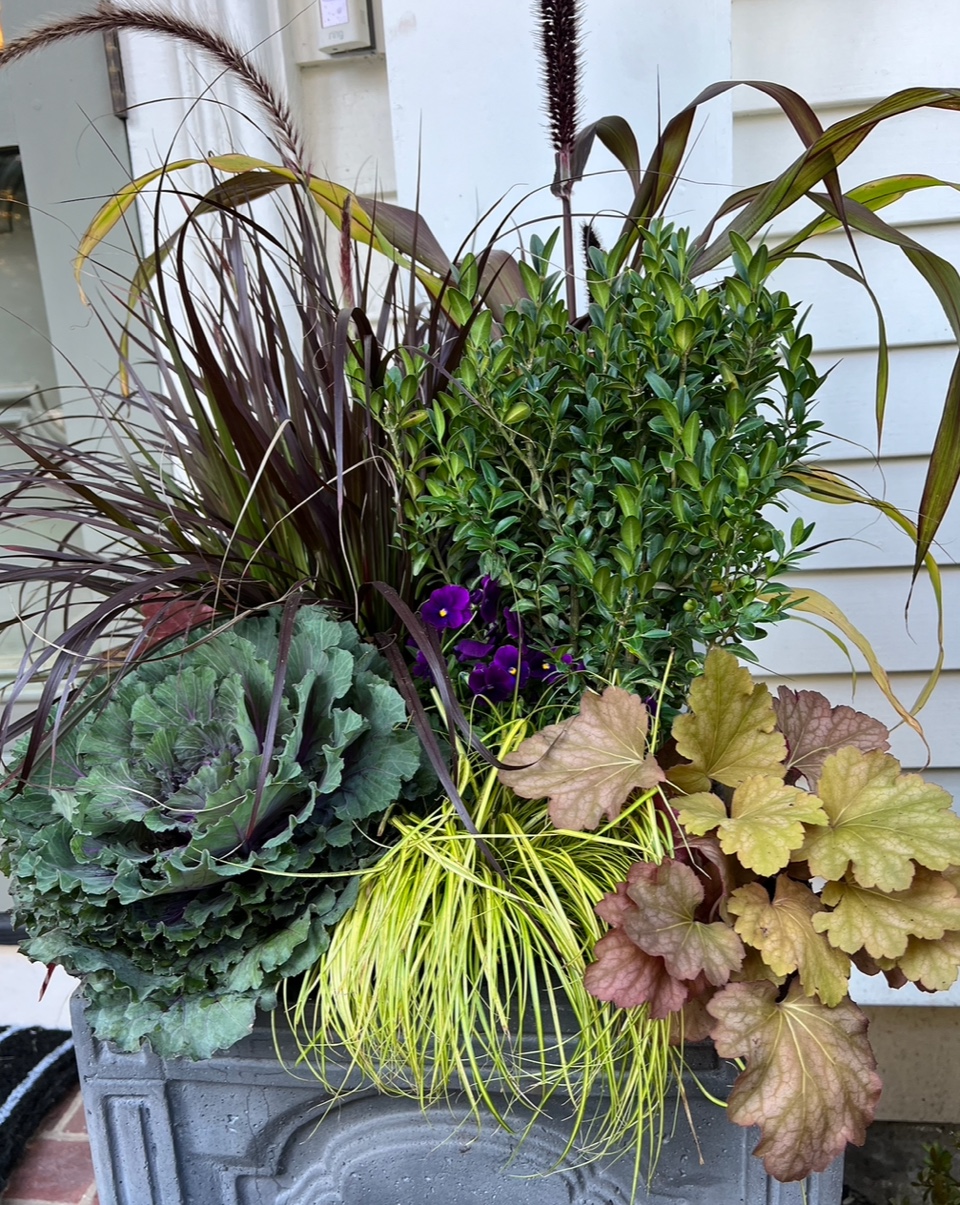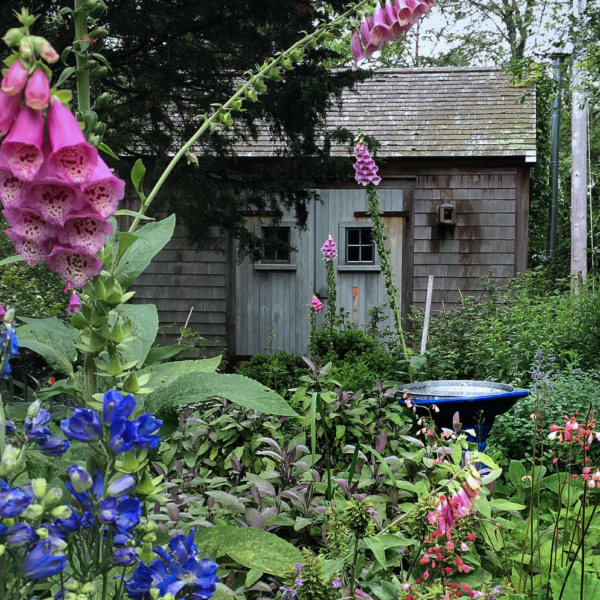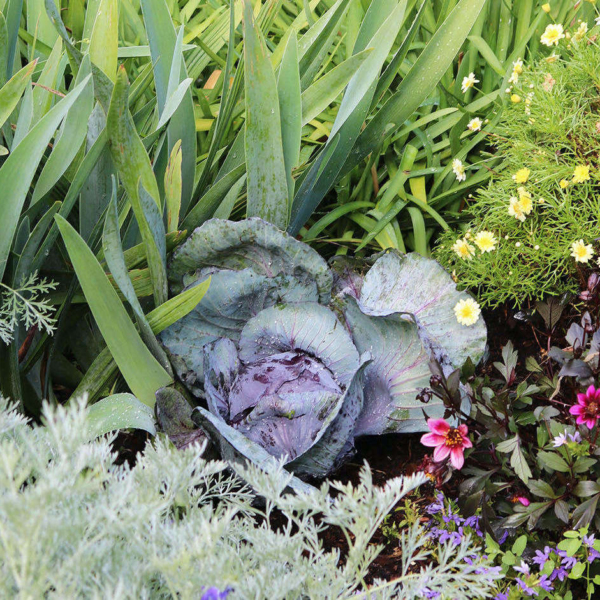When Susan Nock, a garden designer based in Wellesley, Massachusetts, launched her business Thistle eight years ago, she didn’t set out to specialize in container gardens. “I just started doing them for fun. It’s like creating a little vignette, and I love them nestled in a garden or in front of a house.” Over the years, custom container gardens became a signature service alongside her regular garden design work. “I plant containers for all four seasons, and I love to have a fall container for Thanksgiving,” says Nock, who tells us there’s still plenty of time to design planters for the tail end of fall.
Here are her tips for late-autumn container gardening:
Photography by Susan Nock.
Plant a variety of leaf shapes.
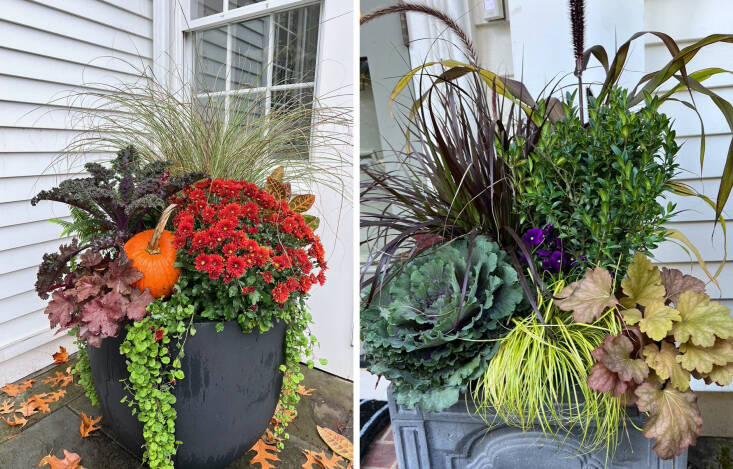
“The number one thing to think about with container composition is making sure you have lots of different leaf sizes, shapes, and textures,” says Nock. “You want to clearly see the different plants against each other, like cabbage next to grass.”
Pick frost-tolerant plants.
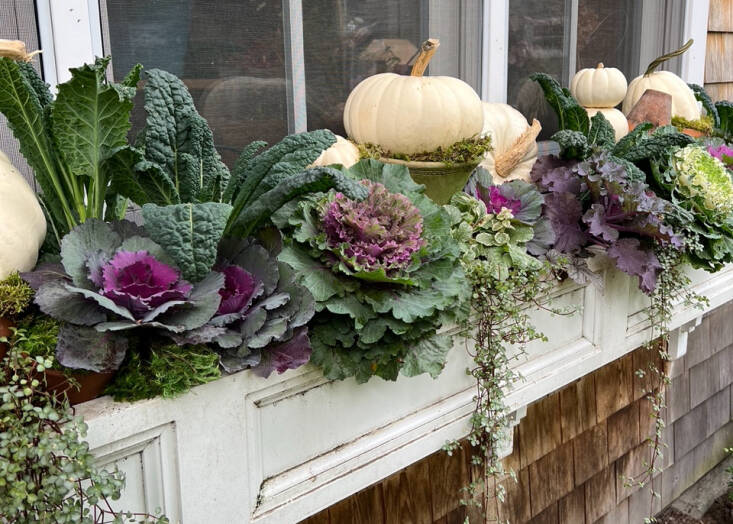
For fall planters, Nock relies on ornamental kale and cabbages, mums, and pansies, all of which will endure some frost. She likes to use tall grasses in her fall containers, too, noting, “Even when they are dormant they will look beautiful.” Nock also recommends weaving in evergreen elements now, with an eye toward reusing them in your winter containers. “You can put in a boxwood now and use it for the next season,” she says. Ditto on cypresses and English ivy, which she uses as a trailing element in containers, where the famously invasive plant can be kept in check.
Elevate those mums and cabbage.
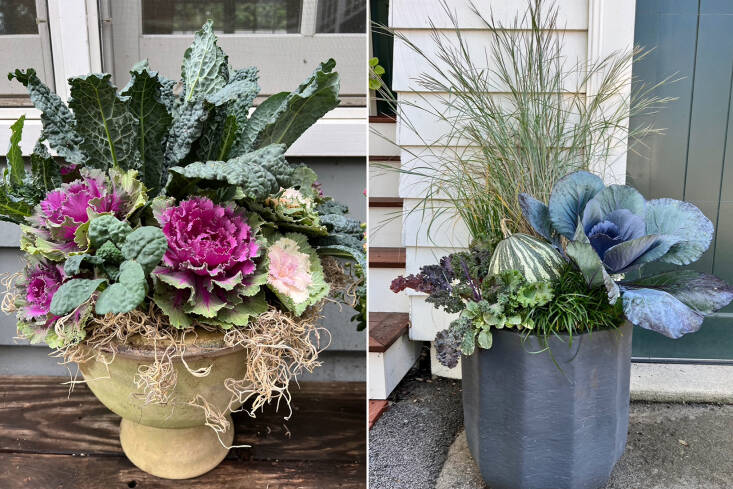
While Nock is pulling from a very conventional fall plant palette, she uses these plants in unexpected ways. “Mums and cabbages can easily look a little old-fashioned,” she cautions. The key to making them look modern, she says, is massing. “We’re not used to seeing them massed in great big groupings.” Another tactic is to work in a tight color palette for a monochromatic effect. With cabbages, she says to look for ones with “fun shapes and textures.” And she says, “If you tuck mums in with other plants, as just one element in the container, they work better. They don’t look as stiff next to flowing grasses or spilling ivy.”
Shop the perennials sale.
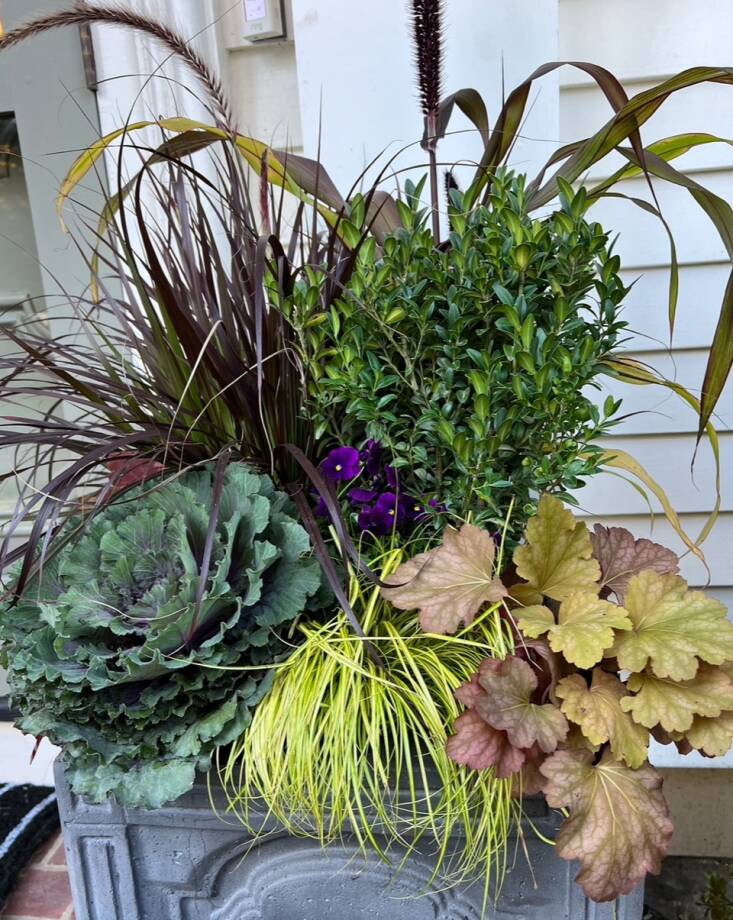
Most nurseries have their perennials discounted right now, which Nock says you might take advantage of. In addition to perennial grasses, Nock looks for heuchera (“I love them all!” she enthuses) and carex, which she uses as a flowing, softening element in her designs. When you take apart your fall planters, you can plant these in the ground (even if it’s a little crunchy) and use them in the garden, or keep them in the containers for another arrangement.
Upcycle your pumkins.
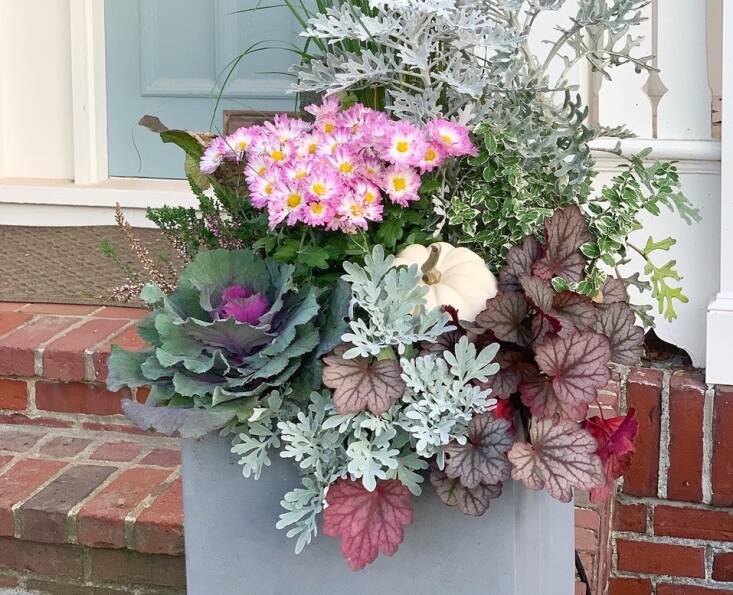
If you’ve got pumpkins and gourds left over from Halloween, re-home them to your planters (and if you don’t, these are likely to be on sale now). Nock especially likes to seek out interesting varieties and shapes and tuck them into the container among the plants. “They become just another texture in the design,” she says. Steal her trick to get them to sit where you want (and avoid rotting): Prop them up on an empty plastic pot from the nursery, which you can conceal with foliage or preserved moss.
Get creative when the pickings are slim.
Nurseries are often picked over come November, so “if you are not finding all the plants you want, tuck in Spanish moss or sheet moss for a fun texture,” says Nock, noting that independent nurseries and farm stands are more likely to have plants this time of year. Consider pinecones, lotus pods, and even some dried hydrangeas to fill in any holes.
Don’t forget to water!
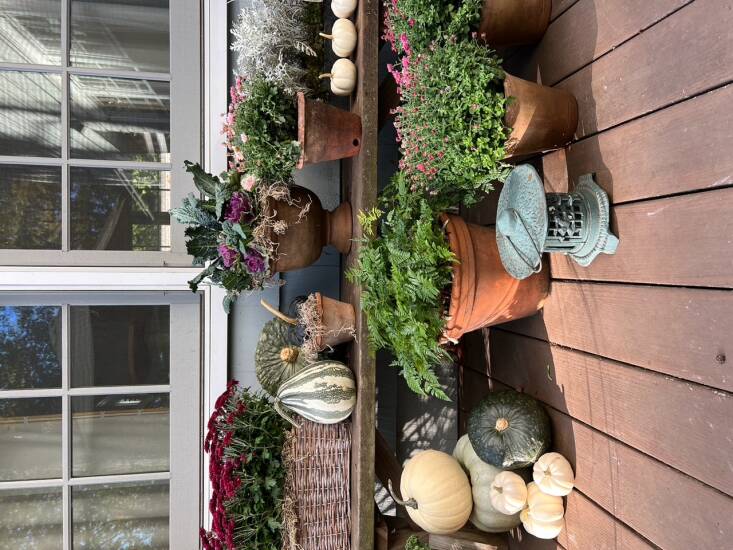
“It’s really important to water in the fall,” advises Nock. “Yes, you have the irrigation shut off, but it is essential to keep pots watered going into the cold season. The more hydrated plants are, the more they can endure cold and frost.” Nock doesn’t stop watering until the daytime temperatures are consistently in the 30s, which is also when she brings her terracotta pots indoors.
See also:
(Visited 4 times, 2 visits today)
